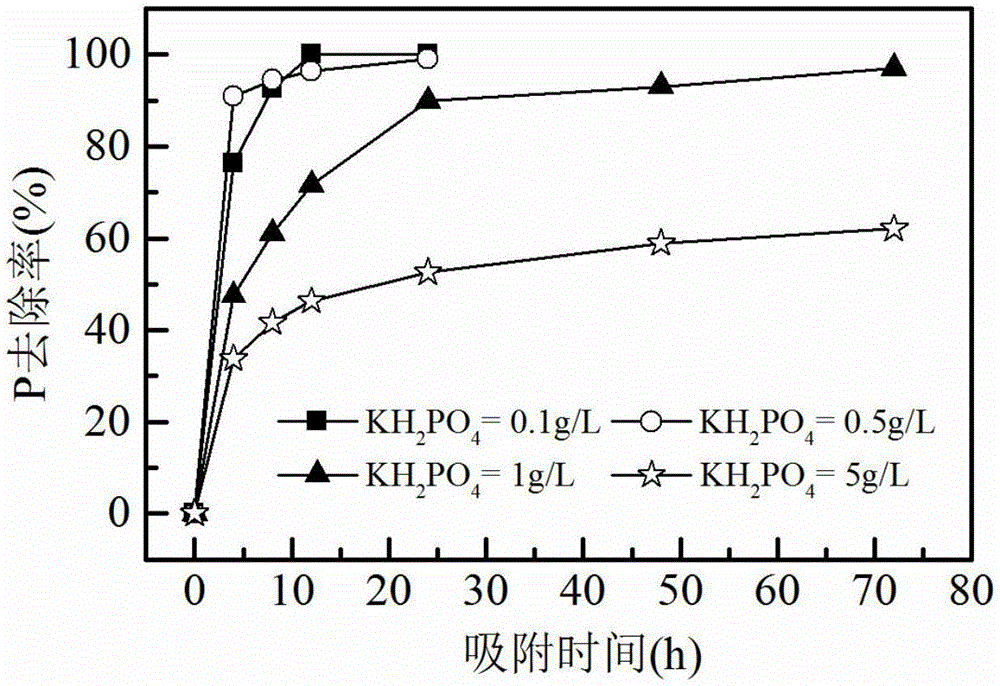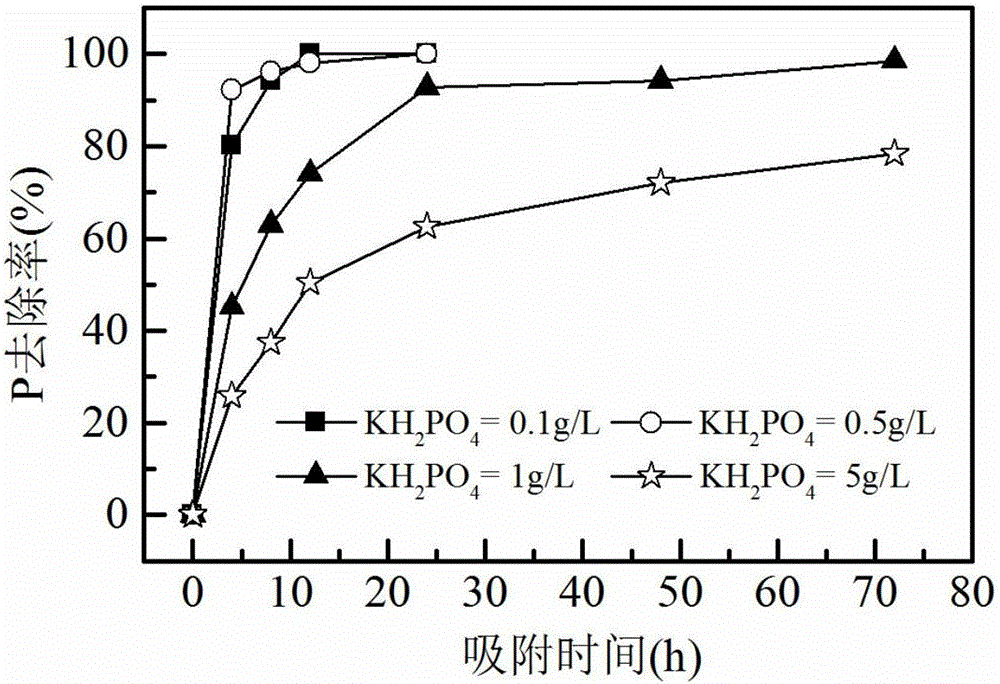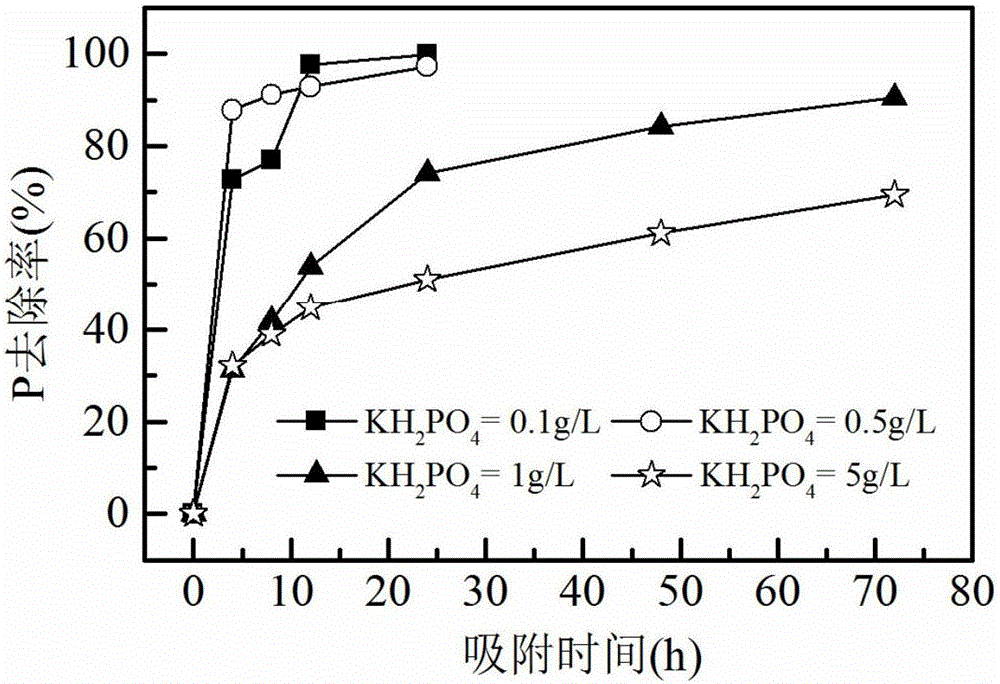Water supply plant sludge-based phosphorus removal particle adsorbent preparation method
A technology for sludge and granular adsorbents in water supply plants, applied in the field of water treatment, can solve problems such as affecting the adsorption effect of sludge in water supply plants, difficulty in recycling and restricting the widespread use of sludge in water supply plants, etc. The effect of waste recycling, economical and fast
- Summary
- Abstract
- Description
- Claims
- Application Information
AI Technical Summary
Problems solved by technology
Method used
Image
Examples
Embodiment 1
[0032] Using feedwater sludge to prepare phosphorus removal adsorption particles includes the following steps:
[0033] (1) The sludge from the water supply plant is naturally dried, crushed and sieved to make the particle size ≤125μm;
[0034] (2) Prepare 100 mL of 0.5% sodium alginate solution and 250 mL of 4% calcium chloride solution respectively;
[0035] (3) Add 10g of sludge from the water supply plant to the 0.5% sodium alginate solution and mix well;
[0036] (4) Use a dropper to drop the mixture in step (3) dropwise into the calcium chloride solution in step (2) to obtain feedwater sludge gel pellets, which are allowed to stand and solidify at 25°C for 8 hours;
[0037] (5) Filter out the solidified feedwater sludge gel ball, rinse repeatedly with deionized water, and bake at 85°C for 24h to obtain feedwater sludge particles. Example 2:
Embodiment 2
[0038] Using feedwater sludge to prepare phosphorus removal adsorption particles includes the following steps:
[0039] (1) The sludge from the water supply plant is naturally dried, crushed and sieved to make the particle size ≤125μm;
[0040] (2) Prepare 100 mL of 1% sodium alginate solution and 250 mL of 4% calcium chloride solution respectively;
[0041] (3) Add 10g of sludge from the water supply plant to the 1% sodium alginate solution and mix well;
[0042] (4) Use a dropper to drop the mixture in step (3) dropwise into the calcium chloride solution in step (2) to obtain feedwater sludge gel pellets, which are allowed to stand and solidify at 25°C for 8 hours;
[0043] (5) Filter out the solidified feedwater sludge gel ball, rinse repeatedly with deionized water, and bake at 85°C for 24h to obtain feedwater sludge particles. Example 3:
Embodiment 3
[0044] Using feedwater sludge to prepare phosphorus removal adsorption particles includes the following steps:
[0045] (1) The sludge from the water supply plant is naturally dried, crushed and sieved to make the particle size ≤125μm;
[0046] (2) Prepare 100 mL of 2% sodium alginate solution and 250 mL of 5% calcium chloride solution respectively;
[0047] (3) Add 10g of sludge from the water supply plant to the 2% sodium alginate solution and mix well;
[0048] (4) Use a dropper to drop the mixture in step (3) dropwise into the calcium chloride solution in step (2) to obtain feedwater sludge gel pellets, which are allowed to stand and solidify at 25°C for 8 hours;
[0049] (5) Filter out the solidified feedwater sludge gel ball, rinse repeatedly with deionized water, and bake at 85°C for 24h to obtain feedwater sludge particles. Example 4:
PUM
| Property | Measurement | Unit |
|---|---|---|
| Particle size | aaaaa | aaaaa |
Abstract
Description
Claims
Application Information
 Login to View More
Login to View More - R&D
- Intellectual Property
- Life Sciences
- Materials
- Tech Scout
- Unparalleled Data Quality
- Higher Quality Content
- 60% Fewer Hallucinations
Browse by: Latest US Patents, China's latest patents, Technical Efficacy Thesaurus, Application Domain, Technology Topic, Popular Technical Reports.
© 2025 PatSnap. All rights reserved.Legal|Privacy policy|Modern Slavery Act Transparency Statement|Sitemap|About US| Contact US: help@patsnap.com



